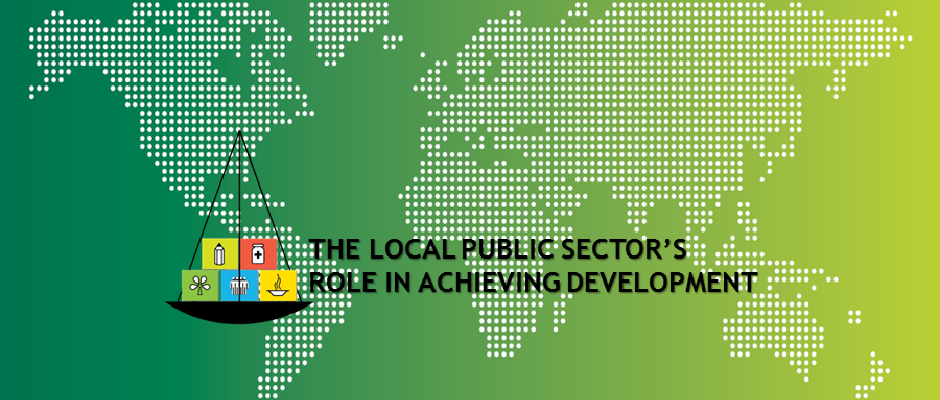
Beginning in the 1990s there was a wave of enthusiasm for the idea that decentralization would promote both democratic governance and economic efficiency. Throughout the 2000s, that optimism increasingly ran up against a second generation of academic research and program evaluation that defied naïve notions of decentralization as an easy solution to the twin challenges of poor governance and economic development.
The volume “Decentralized Governance and Accountability: Academic Research and the Future of Donor Programming”—supported by the U.S. Agency for International Development (USAID) Center of Excellence in Democracy, Human Rights, and Governance (DRG)—represents an examination of how academic research might instruct the future of donor programming on decentralized governance.
Much of the best research on decentralization over the last two decades has come from close collaborations between university-based researchers and institutions like the World Bank and the United States Agency for International Development (USAID). Given that the volume and quality of this collaborative research have increased in recent decades, the time is right to review what we have learned about decentralized governance and how these lessons might inform future programming. As studies have become more exacting and careful in their approach to causal identification, they can also become more context-dependent. For instance, a decentralization program might appear to produce positive health outcomes in Uganda, while a largely similar program in Ghana produces no results.
The development community and academics alike are left wondering whether the difference stems from small tweaks or mistakes in the design of the program (or the evaluation), or whether there is something distinctive about each context. In light of existing research, can we say anything beyond the bromide that “context matters”? The answer, as provided by these chapters, is a resounding “yes.”
THE EFFECT AND EFFICACY OF LOCAL ELECTIONS
The earliest proponents of political decentralization emphasized local elections as a means to promote accountability. Initially, however, claims of the superiority of local elections (versus the appointment of local officials by higher-level authorities) largely rested on untested claims and faith. At this point, researchers have a good deal of evidence on the pros and cons of elections as a mechanism to select local officials. Local elections generate better outcomes than appointment, particularly in environments with extensive political competition, a robust media market, low levels of social and economic inequality, and strong national political parties. There are some narrow conditions under which the appointment of local officials may dominate elections—such as when the success of national officials is closely tied to local output and a corporate party structure can induce yardstick competition via promotions and retention (think China)—but the overarching message is that local elections often do provide stronger incentives for local officials to be responsive.
At the same time, there are many conditions under which local elections may not live up to their potential. The integrity of decentralized elections is often threatened by clientelistic practices, i.e., the targeting of public resources to citizens in exchange for their votes. Where clientelism is pervasive, it favors short-term benefits at the expense of broad policy considerations. This has important costs to social welfare, transparency, and accountability. Researchers have learned a good deal about the processes that underpin clientelism: Poor voters are more responsive to clientelistic appeals; for clientelistic exchange to work, parties have to be able to monitor how voters (or groups of voters) vote; and local vote brokers are crucial intermediaries between parties and voters/clients.
Program designers and academics alike should focus on how the hierarchical organization of parties shapes the incentives of local officials to be responsive to local citizens versus clientelistic machines.
LOCAL FORMS OF ACCOUNTABILITY
For many, decentralization is desirable to the extent it promotes local accountability, and most attention has focused on the formal institutions that govern decentralized governments. Yet, in many settings (and particularly where the state is weak) traditional tribal, religious, and caste leaders play a crucial role in local governance. Though many practitioners and academics have voiced skepticism about traditional leaders, there is growing evidence that such leaders are often socially accountable, have long time horizons and serve as “development brokers.” Particularly where they are politically and socially embedded in their communities, they have incentives to govern well even in the absence of elections.
Given their importance and our growing body of knowledge about the conditions under which traditional leaders have good incentives, they deserve a more prominent role in donor programming on decentralized governance.
Yet local citizens live in highly varied social contexts even in a single city or county. Experiences with social accountability theory and programming to date suggests several recurring weaknesses, such as overreliance on transparency, poorly specified theories of change, and lack of attention to local context — weaknesses that could be at least partially addressed by paying more attention to research on social networks. Such research provides a rigorous means of thinking about and measuring social capital, the density of civil society, social trust, information transmission across citizens, social coordination, and collective action — and thereby the conditions under which social accountability initiatives are likely to work and how they might be precisely tailored to specific local contexts. There are exciting opportunities for collaboration between academics and the aid community in conducting rigorous explorations of social networks.
SOCIAL HETEROGENEITY AND CONFLICT
Decentralization takes on special significance in societies that are divided by strong ethnic, religious, or other social cleavages, as decentralization might be part of the solution in the aftermath of conflict generated by such divisions. In these contexts, the success of decentralization, and much of the aid and donor programming related to it, crucially depends on ethnic geography, the salience of ethnicity, and the ways in which parties and political institutions shape the incentives of elites.
The presence of geographically segregated social groups is often part of the basic logic of decentralization, which can allow different local groups to offer their desired forms of religious or language training to schoolchildren, for example, rather than forcing a “one-size-fits-all” policy.
A careful assessment of post-conflict community-driven development programs suggests that such programs demonstrate relatively consistent positive effects on service delivery but weaker effects for socioeconomic wellbeing, no long-term effects for governance, and very context-dependent effects regarding the return of violence.
THE STRUCTURE OF JURISDICTIONS
One of the striking dynamics across the developing world is the proliferation of local governance units across a huge number of countries. Pierskalla’s chapter makes clear that this often occurs because of district- or county-splitting, but as Post and Carter explain, this also results from the proliferation of often-overlapping special-purpose districts in burgeoning cities across the developing world. There are reasonable arguments in favor of making decentralized government small. Most important, they can provide representation for marginalized, geographically concentrated groups who otherwise might struggle to find influence in larger districts. But as Pierskalla explains, this increased representation often comes at the cost of weakened administrative capacity and more corruption, and the logic that typically drives district proliferation derives from political-strategic considerations rather than concerns with minority representation or the efficiency of the public sector. While academics have considerable work to do in order to understand the causes and consequences of proliferating units of governance, donors and implementers should be aware of this trend, and the potential role of the aid community in contributing to it.
This point is reinforced in the chapter by Carter and Post, which explains that while much of the empirical work on decentralization in developing countries focuses on rural villages, cities are growing rapidly and face distinctive challenges associated with land titling, urban infrastructure, pollution, service delivery, and slum management. They review a largely policy-based body of work on urban public finance and public administration and explain that overlapping jurisdictions and the proliferation of special-purpose districts are an obstacle to coordination and accountability. These special-purpose districts, often designed to overcome or avoid popular opinion, serve to multiply the number of actors involved in the provision of services, which in turn makes it difficult to solve many urban problems (infrastructure, the environment, property regulation, etc.) that are inherently cross-sectoral.
On a more positive note, political competition, independent fiscal resources, and strong civil societies facilitate more democratic outcomes following decentralization to municipal authorities: decentralization can help urban citizens to pressure more effectively for inclusion and access, but can also make it more difficult for policymakers to address metropolitan-level or long-run concerns regarding investments in basic infrastructure that are complicated by overlapping jurisdiction and/or not salient to voters.
PUBLIC FINANCIAL MANAGEMENT AND ECONOMIC DEVELOPMENT
One of the primary arguments links decentralization to improved outcomes through the supposedly superior capacity of local decision-makers to tailor local taxing and spending to specific local circumstances and thereby promote local development. One of the biggest challenges in developing countries is the construction of a vibrant private sector in which business owners feel comfortable making long-term investments. In many settings the underlying endowments are such that local development is very difficult to promote. Economic geography is crucial. Decentralization often enhances local and regional inequality as labor and capital migrate to those few localities with better-off consumers and better services. The classic core-periphery dynamic is quite persistent.
Local-level inequality is reflected in the huge variation in decentralized governments’ ability to collect taxes. A great deal of research and development programming has focused on local revenue mobilization. Some evidence suggests that own-source revenues, as opposed to intergovernmental grants, are associated with less waste and better public-service provision. Nevertheless, the margin for seriously improving the performance of the local public sector via enhanced local revenue collection is probably quite modest because local tax bases are often extremely thin, especially in rural areas. Moreover, many typical decentralized taxes (e.g., head taxes and property taxes) are politically unpopular.
Thus, for many decentralized governments, central transfers will remain the most important source of local revenue, and the design of those transfers and their corresponding implications for local incentives needs more attention from both academics and the policy world. Fruitful collaboration between academics and donors that can reveal basic insights about the impact of different types of taxes, transfers, and direct central service provision is only in its infancy.
CONCLUSIONS: ACADEMIC AND POLICY WORK IN THE SERVICE OF LEARNING
Many of the significant advances in what the community of practice knows about decentralized governance have emerged from the joint efforts of academics and development practitioners over the last two decades. These collaborations typically began in an ad hoc way, and the merging of the two cultures and institutional environments has been challenging. But experience is loosening the boundaries, and both sides of the relationship are better positioned than ever to work with the other.
From aid agencies’ point of view, academics are not always easy to work with. Their concerns about statistical power might lead them to demand that an intervention be expanded to far more villages, neighborhoods, or facilities than the budget allows. They might insist that mid-course corrections be avoided to facilitate a clean end-line analysis. Or they might ask for what seem like excessively simple interventions in complex environments. Sometimes they deliver bad (or ambiguous) news to those who have invested years of work in programs that they believe to be effective.
Nonetheless, a few basic principles have emerged from academic involvement in applied development work:
• When designing programs, it is necessary to carefully articulate a program theory linking specific interventions to specific measurable outcomes. Academics can help practitioners at this stage by stating their own theories clearly and helping translate them for the policy world.
• The evaluation agenda must be considered as early as possible in the process of program design to facilitate finding the clearest possible link between specific interventions and specific outcomes. Early coordination and careful pre-analysis planning are crucial.
• The ongoing evaluation agenda requires less complex program designs. This can be achieved by slicing off a smaller piece of a broader multi-year, multi-pronged project and providing a rigorous design and implementation that is subject to strict monitoring and evaluation standards. There is a number of exacting design options beyond randomized control trials, and some of them (such as phased designs) have the advantage of making implementation easier.
• Academics have made significant advances in data collection, measurement, and statistical modeling over the last decade. While some of those advances have been adopted in development work on decentralized governance, others have not. Large gains can be made by systematic engagement when designing data collection systems and analyzing the results.
Read the full report on USAID’s website: Decentralized governance and accountability: academic research and the future of donor programming (eds. Jonathan Rodden And Erik Wibbels).





